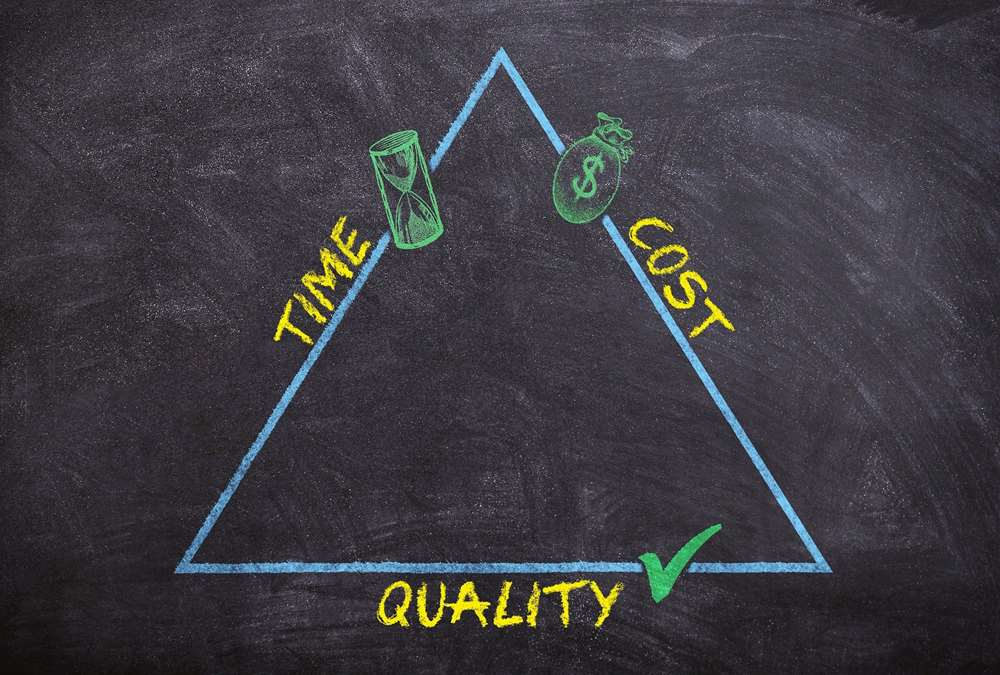- Home
- Business Processes
- Industry Knowledge
- Aerospace Industry
- Automotive Industry
- Banking Domain
- BFSI Industry
- Consumer/ FMCG Industry
- Chemicals Industry
- Engineering & Construction
- Energy Industry
- Education Domain
- Finance Domain
- Hospitality Domain
- Healthcare Industry
- Insurance Domain
- Retail Industry
- Travel and Tourism Domain
- Telecom Industry
- Leadership Skills
- eLearning
- Home
- Business Processes
- General Ledger
- Complexities in GL System
Complexities in GL System
Although technically a general ledger appears to be fairly simple compared to other processes, in large organizations, the general ledger has to provide many functionalities and it becomes considerably large and complex. Modern business organizations are complex, run multiple products and service lines, leveraging a large number of registered legal entities, and have varied reporting needs.
These complexities create a need for advanced general ledger systems providing new functionalities. Let us understand some drivers for this complexity.
1. Specialized Software
For large organizations, the general ledger is hosted on a computerized system, integrated with multiple sub-ledgers and the legacy general ledgers. For the most part the journal entry is automated and fed into the general ledger through a complex import process. GL is the backbone of any enterprise resource planning (ERP) software and the general ledger stores the transactions into a database that is shared with other processes being managed through the ERP. In such cases a GL provides the following information:
- General ledger chart of accounts
- Administration of general ledger database reporting/consolidation structure
- Preparation and recording of journal entries
- Monitoring of the close process at unit and company levels
- Review and analysis of account and unit-level trial balances
- Preparation of consolidated company trial balance
- Generation and distribution of monthly system financial reports
- Reconciliation of balance sheet accounts and related bank statements
- Preparation of eliminating entries
- Finalization of monthly consolidated statements
- Calculation and consolidation of expense type (selling, general and administrative/cost of sales) information
- Maintenance of corporate/group overhead allocation pools and related rates
- Manual record retention/archiving and audit support specific to general accounting.
2. Multitude of Subsidiary Ledgers
For any company that has a large number of transactions, putting all the details in the general ledger is not feasible. Hence it needs to be supported by one or more subsidiary ledgers that provide details for accounts in the general ledger. Consider any one account in a general ledger, such as Accounts Payable. Perhaps you want to know how much money you currently owe to each of your suppliers and this information is very critical for you to manage your relationship with that supplier and to ensure that you are paying only for what you purchased and received. If you only have one or two suppliers, it is easily possible to compile this information directly in the general ledger by opening two natural accounts in the name of the suppliers. But what if you have hundreds or even thousands of suppliers? In that case, you may want to create subsidiary ledgers for accounts payable that will capture the complete master and transactional level details for each of your suppliers. This way, you can record the details of transactions involving each supplier in the relevant subsidiary ledger and then subsequently transfer the totals into a control account in the general ledger.
3. Complex Organizational Structure
Modern business organizations run multiple products and service lines, operate globally, leverage a large number of registered legal entities, and operate through complex matrix relationships. To stay competitive in the current global business environment, they must often develop highly diverse and complex organizational structures that cross international borders. These complexities create a need for advanced operational and supporting business processes to drive organization-wide effectiveness, efficiency, and achieve business objectives. This forces companies to create a diverse array of subsidiaries, legal entities, organizations, and accounting processes to ensure a smooth and profitable business flow. Tax considerations also impact how businesses construct these complex legal structures. General Ledger has to be structured in a fashion that it can cater to the reporting needs of every unit, department, and regulatory bodies in this complex structure.
It needs to collect and process data from these multiple units and provide a consolidated view of the enterprise for shareholders and management.
4. Legacy Systems
Mergers & Acquisitions (M&A) is the new normal for large companies, driving innovation and growth. The capability to successfully integrate or divest businesses is a major source of competitive advantage. There is a lack of flexibility to integrate mergers and acquisitions. All these corporate actions bring added complexity from a general ledger standpoint. Legacy data need to be transferred to the organizational chart of accounts system and accounting policies. Systems need to be established to collect and transform such data on an ongoing basis until the migration to the enterprise general ledger is done.
5. Multiple Charts of Accounts
In these large corporations, different business units within the company have different COAs and different reporting priorities and the standard reports don’t produce the information the organization needs to properly run the business or meet tax and/or regulatory needs. Complexity arises also because of accounts that are not used consistently across the organization, reducing the effectiveness of reporting and consolidation.
6. FX and Complex Currency Requirements
For international businesses with significant volumes of cross-border transactions, the management of currency risk is an essential task for the treasury department. There are businesses with varied and very complex FX management needs, either because they have higher transaction volumes or because they work with a larger number of currencies. In these cases, their General Ledger becomes very complex as it needs to manage various processes like multi-currency recording, translation, conversion, and revaluation. Some businesses also do FX leveling and sweep to manage the hedging risks.
7. Changing Regulatory Landscape
The global regulatory landscape is undergoing a fundamental change. In the years since the 2007/08 financial crisis, regulators across the globe have focused on a program of more robust supervision of financial services firms. The increasing weight of new regulatory legislation from regulators, coupled with the increasingly diverse risks to which firms are exposed, means that firms need to ensure that their general ledgers are updated and flexible enough to provide the data needed for these changing participants are required to adapt and evolve to address the regulatory and technological changes.
Related Links
You May Also Like
-
Defining Organizational Hierarchies
A hierarchy is an ordered series of related objects. You can relate hierarchy with “pyramid” - where each step of the pyramid is subordinate to the one above it. One can use drill up or down to perform multi-dimensional analysis with a hierarchy. Multi-dimensional analysis uses dimension objects organized in a meaningful order and allows users to observe data from various viewpoints.
-
Horizontal or Flat Organizational Structures
Flat organizational structure is an organizational model with relatively few or no levels of middle management between the executives and the frontline employees. Its goal is to have as little hierarchy as possible between management and staff level employees. In a flat organizational structure, employees have increased involvement in the decision-making process.
-
In every journal entry that is recorded, the debits and credits must be equal to ensure that the accounting equation is matched. In this article, we will focus on how to analyze and recorded transactional accounting information by applying the rule of credit and debit. We will also focus on some efficient methods of recording and analyzing transactions.
-
When the quantum of business is expected to be moderate and the entrepreneur desires that the risk involved in the operation be shared, he or she may prefer a partnership. A partnership comes into existence when two or more persons agree to share the profits of a business, which they run together.
-
A joint venture (JV) is a business agreement in which the parties agree to develop, for a finite time, a new entity and new assets by contributing equity. They exercise control over the enterprise and consequently share revenues, expenses and assets. A joint venture takes place when two or more parties come together to take on one project.
-
Although technically a general ledger appears to be fairly simple compared to other processes, in large organizations, the general ledger has to provide many functionalities and it becomes considerably large and complex. Modern business organizations are complex, run multiple products and service lines, leveraging a large number of registered legal entities, and have varied reporting needs.
-
What is Accounting & Book Keeping
Accounting is a process designed to capture the economic impact of everyday transactions. Each day, many events and activities occur in an entity, these events and activities are in the normal course of business; however, each of these events may or may not have an economic impact. Events or activities that have an effect on the accounting equation are accounting events.
-
This article explains the process of entering and importing general ledger journals in automated accounting systems. Learn about the basic validations that must happen before the accounting data can be imported from any internal or external sub-system to the general ledger. Finally, understand what we mean by importing in detail or in summary.
-
Introduction to Legal Entities Concept
Modern business organizations operate globally and leverage a large number of registered legal entities, and operate through complex matrix relationships. To stay competitive in the current global business environment, they must often develop highly diverse and complex organizational structures that cross international borders. Learn more about Legal Entities and their importance for businesses.
-
The sole trader organization (also called proprietorship) is the oldest form of organization and the most common form of organization for small businesses even today. In a proprietorship the enterprise is owned and controlled only by one person. This form is one of the most popular forms because of the advantages it offers. It is the simplest and easiest to form.
Explore Our Free Training Articles or
Sign Up to Start With Our eLearning Courses

About Us
Learning
© 2023 TechnoFunc, All Rights Reserved









